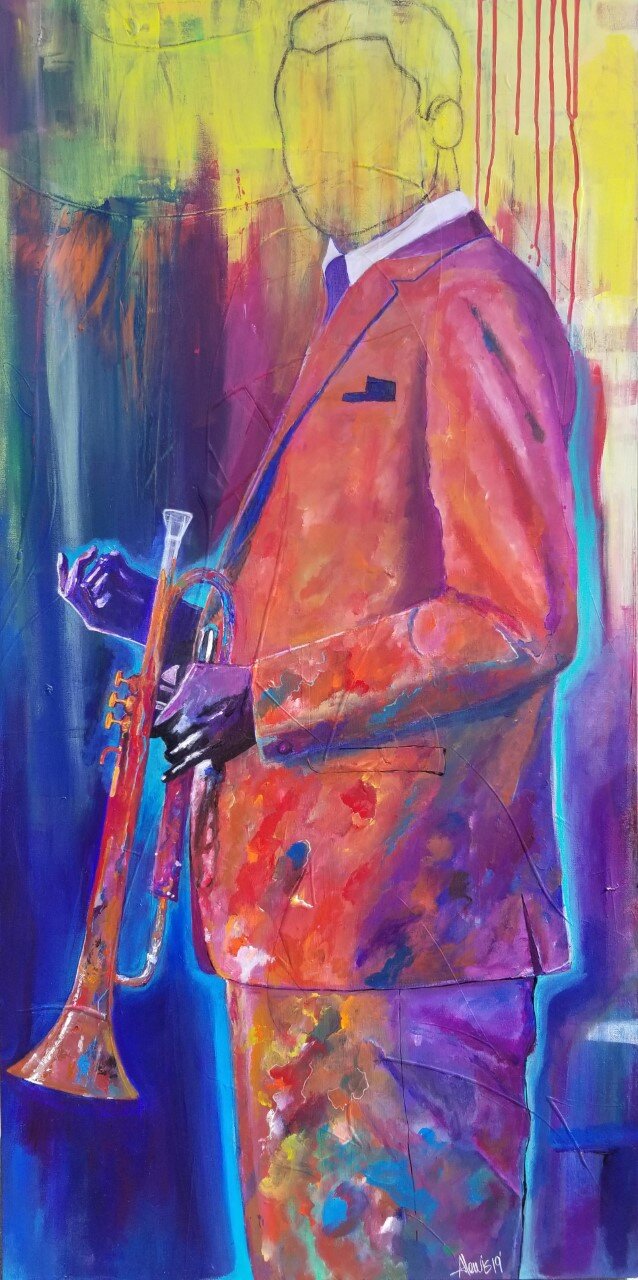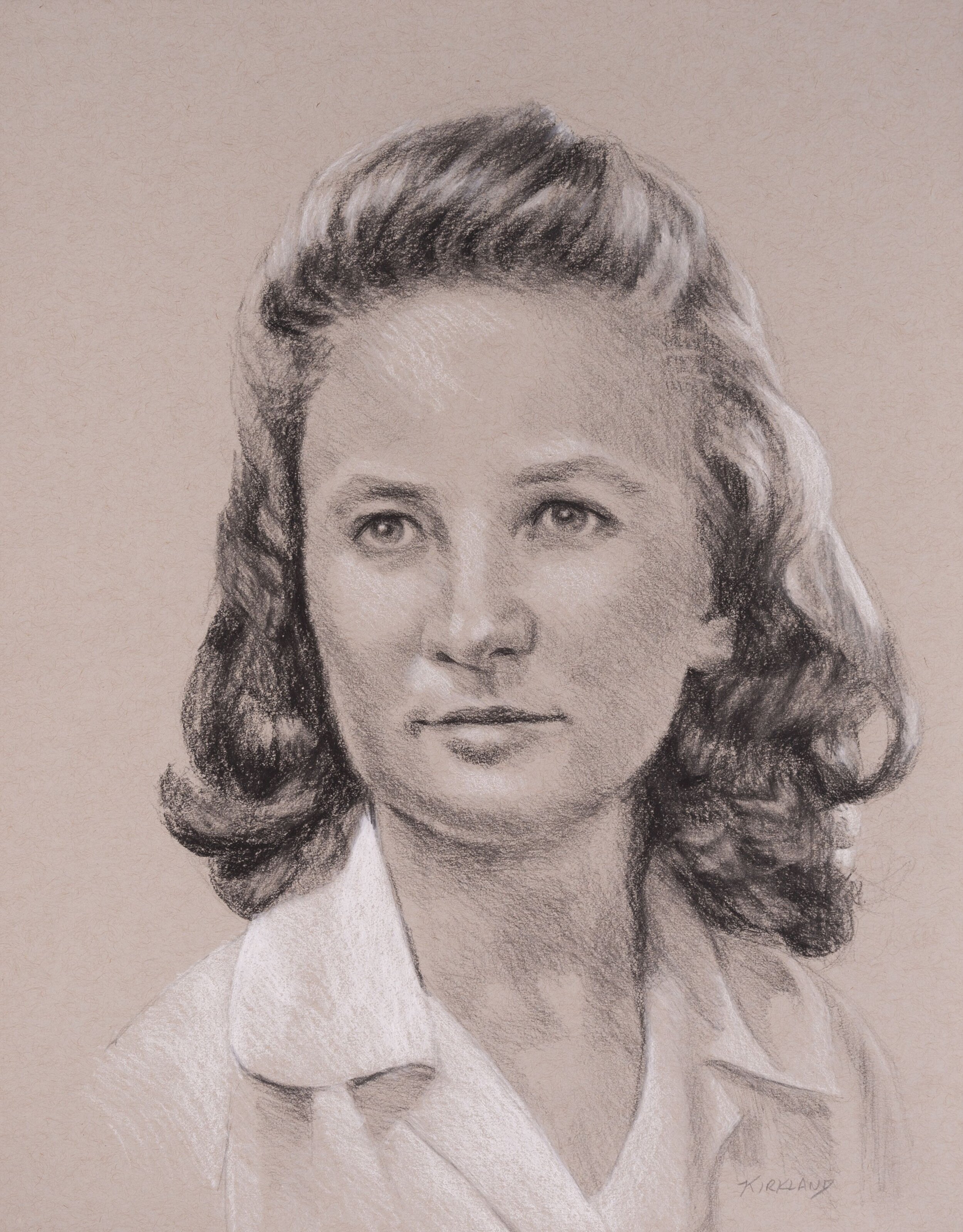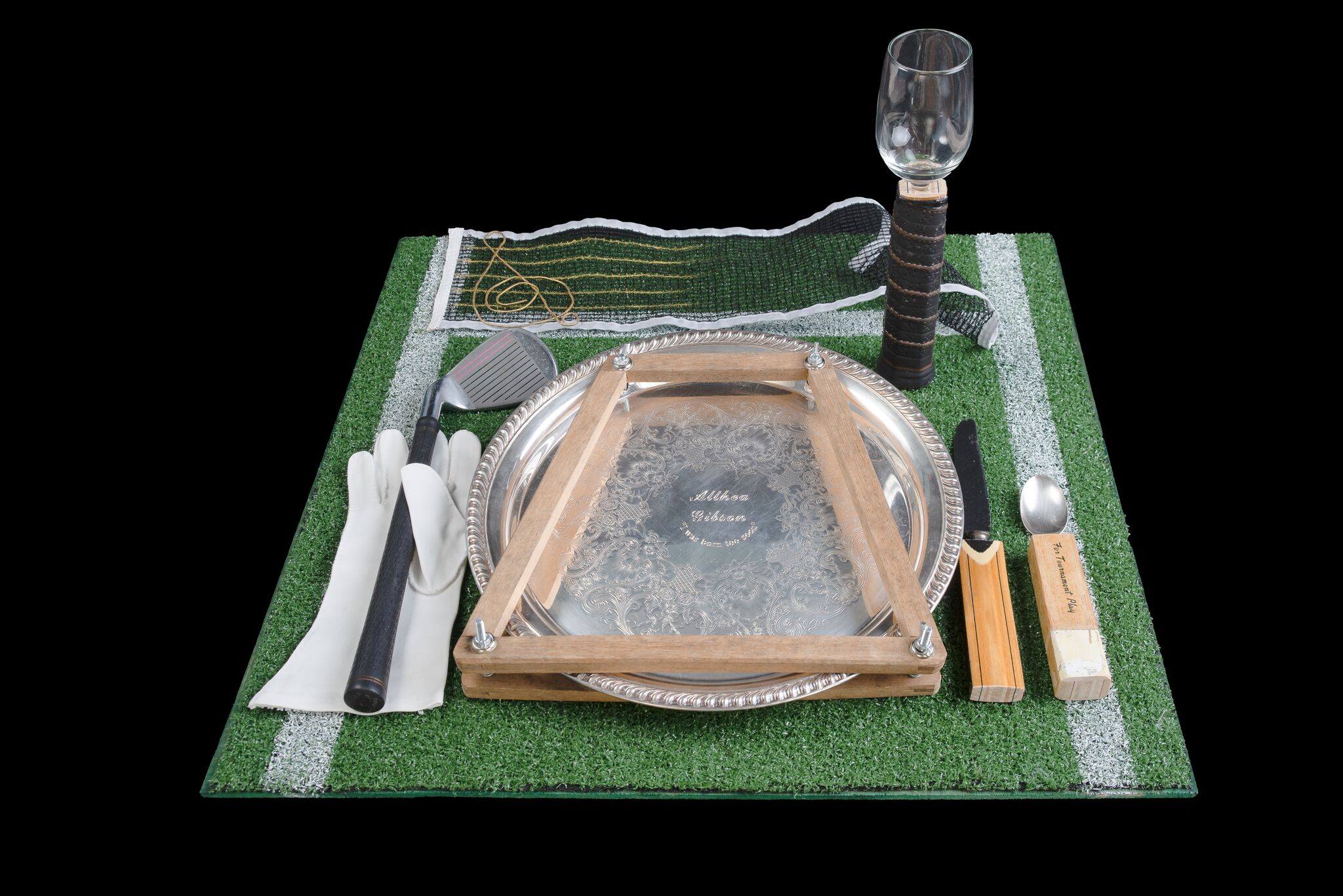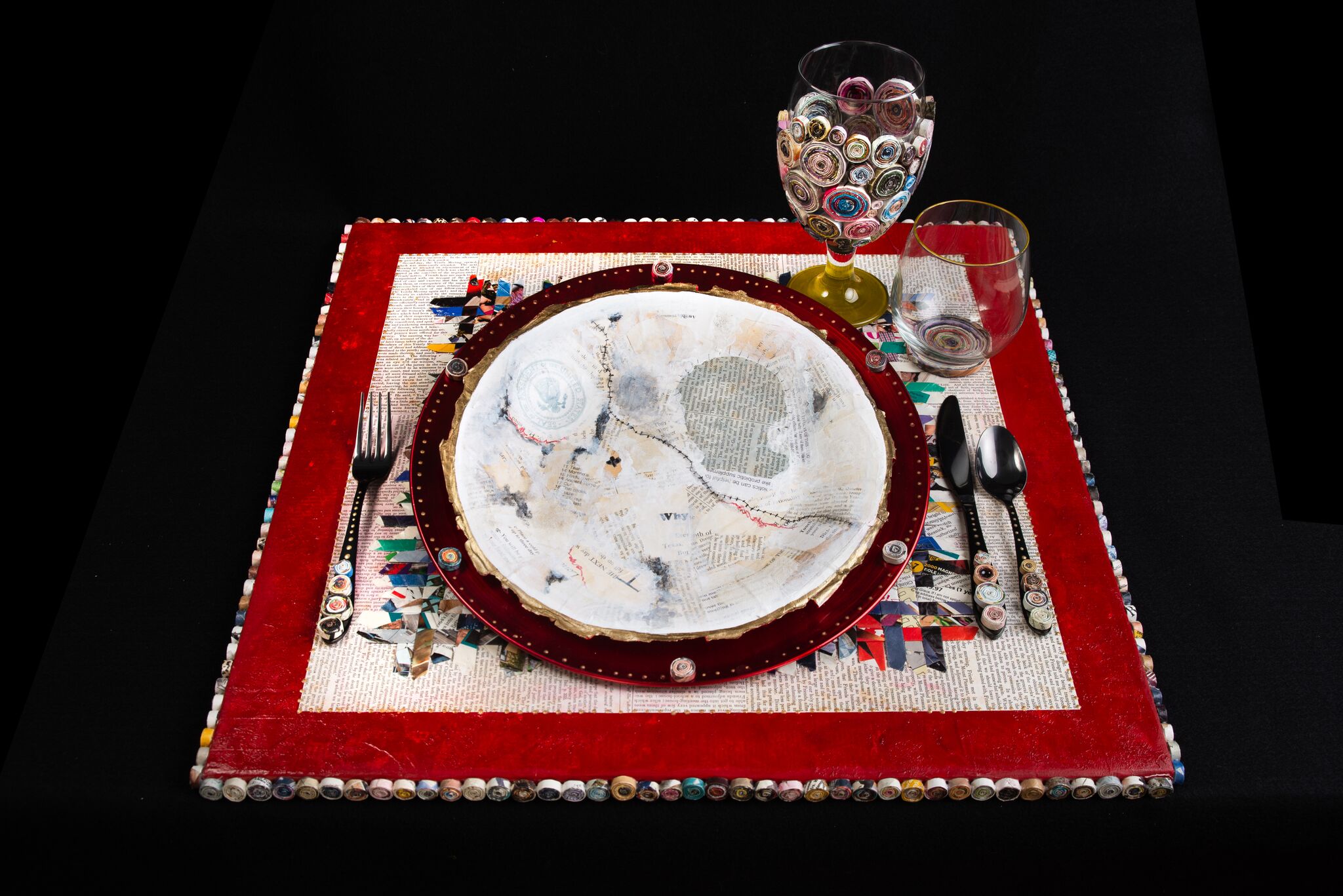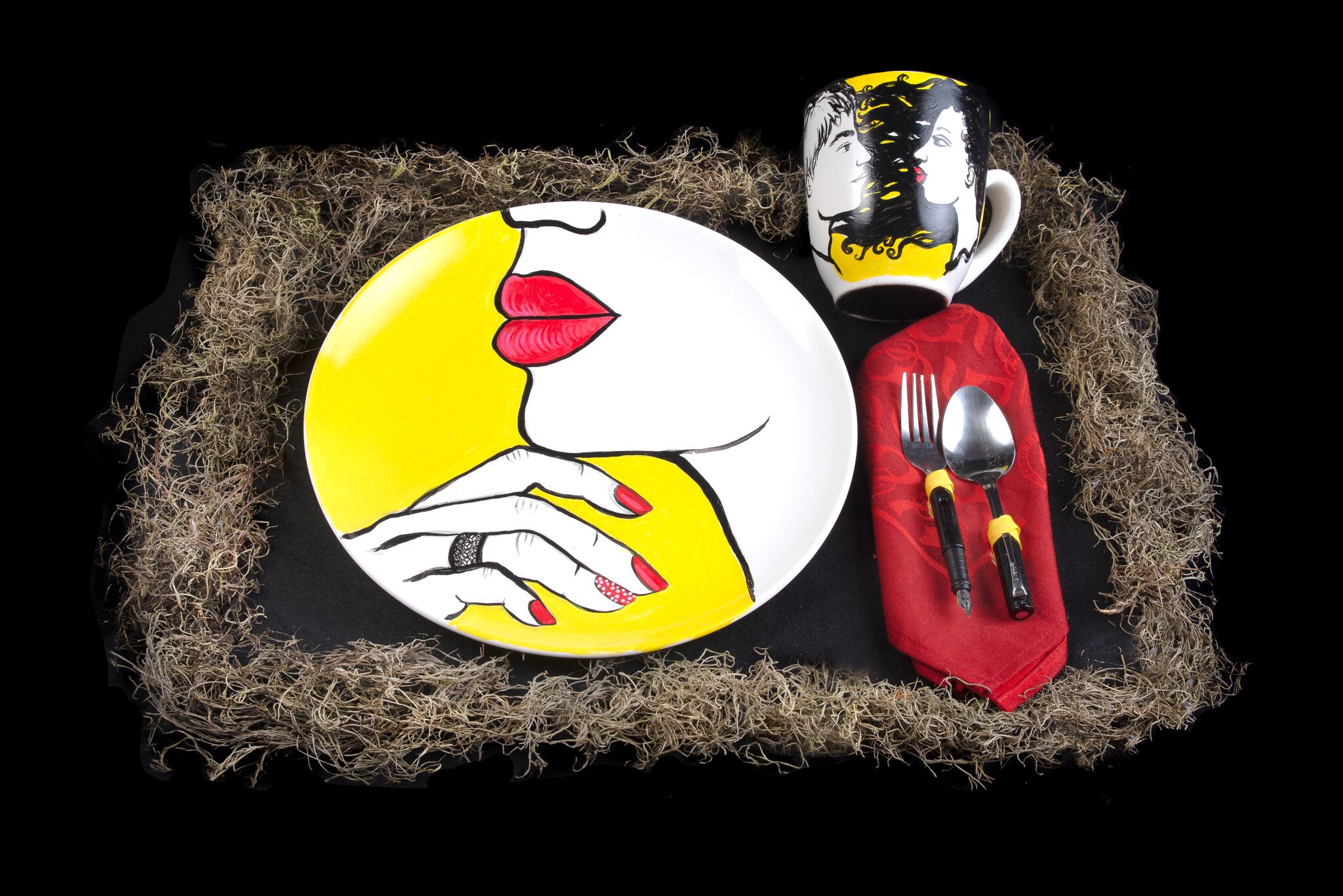(Clockwise from upper left) Martha Hearn Kelly, Marshall Spann, Hillary Scales-Lewis, G. Scott Wild, Jennifer Lucas O’Brient, Tashera Pravato-Hutchenson, Kira Nessel, Charles Bingley
The Yuletide is fully upon us, and one of the hallmarks of the season is getting together and spending time with old friends, some of whom you may not have visited in years. Such was certainly the case for this reviewer/bibliophie, who enjoyed a delightful evening in the company of a handful of classic Jane Austen characters last Saturday night at Trustus Theatre. Miss Bennet: Christmas At Pemberley is a lighthearted, oft-hilarious, affectionately cheeky sequel to Austen’s novel, Pride And Prejudice. Set two years after the events of the original story, we find the still-single Mary Bennett just as bookish, and perhaps slightly more sardonic than ever. The family circle is gathering for Christmas, with much excitement and befuddlement over the Christmas tree, a new holiday novelty of the era, only recently adopted from German culture. Lizzy Bennet, now Mrs. Fitzwilliam Darcy, is a bit less than thrilled that her husband has invited the socially awkward but charming Arthur de Bourgh to join the family for the merriment, but welcomes him warmly, as does the rest of the group. Kittenish younger sister Lydia amuses herself by chasing de Bourgh around the house with mistletoe, despite his bumbling efforts to dissuade her from her pursuit, while the fourth Bennet daughter, Jane, does her best to remain calm and relaxed as she awaits the any-minute-now arrival of her first child with husband Charles Bingley. A few comedic mishaps aside, all seems to be going smoothly, with the cozily predictable romance between Mary and Arthur developing slowly over their shared love of books and intellectualism, until Arthur’s in-name-only fiancée, Anne, shows up in full hauteur. The second act moves briskly, but pulls back slightly on the pace of the storytelling, allowing for several glimpses into the characters and their motivations. Multiple minor revelations, in tandem with a couple of significant eleventh-hour reveals, allow for a happy ending and the promise of contentment for all.
Director Libby Hawkins clearly loves the material, providing her cast with solid guidance and a well-developed sense of the show’s heightened reality. There’s more comedy here than in Pride And Prejudice, but Hawkins never allows the material to evolve into parody or satire. The direction is respectful to the source material without going so far as to lose its sense of freshness. Two subtle choices are perfectly integrated into the action, nicely counterbalancing the formality of speech and conduct that establish the period with a contemporary accessibility. The first is physical in nature, with the characters using gestures and movements that, while not at all anachronistic, could easily be seen in the interaction of young adults in 2019. It’s a small button on an already clearly defined universe, but it truly helps to draw the audience into the goings-on while humanizing what could have easily been a stereotypical set of 19th century formal poses and strictly choreographed standing, sitting, and grandly sweeping exits. The second choice is to punctuate scene changes and the passing of time with modern (well, 1960s and forward) Christmas tunes. From “Step Into Christmas” to “All I Want For Christmas Is You,” with such emotionally evocative musical checkpoints as “Blue Christmas” and “Please Come Home For Christmas” along the way, the production’s soundtrack entertains while gently reminding the audience that family and romantic entanglements are as timeless and sometimes messy as modern relationships.
The performances are, as is almost always the case at Trustus, polished and professional. In the title role, Martha Hearn Kelly skillfully walks a tightrope between loveable nerdiness and low-grade bitchiness toward those around her, and succeeds in creating a sympathetic and relatable character. Kelly’s Mary Bennet doesn’t suffer fools lightly, but there’s obviously a great deal of warmth beneath her icily intellectual façade. When we see her fall to despair, (don’t worry, it all works out) Kelly’s full commitment to Mary’s emotions reveals a tender, delicate soul who is more easily wounded than one might have predicted based on the early scenes. As her clumsily dashing counterpart, Marshall Spann brings Arthur de Bourgh to gloriously befuddled life, imbuing meaning and texture to every stammer, nervous tic, and forced chuckle. Tall, handsome, and wealthy, de Bourgh is set up from the start to eventually reveal the Superman we all knew was beneath his Clark Kent exterior all along. Not only does he find his backbone and win the love of his lady fair, he also provides a deus ex machina moment toward the conclusion that proves compassion and kind-heartedness to be prominent among his many good qualities. As boy-crazy Lydia, Kira Nessel enters with all the giddy naughtiness of a sorority girl on spring break, but doesn’t waste time in establishing Lydia as a semi-tragic figure making the best of a distant and unhappy marriage to an oft-absent husband. As with Kelly and Spann, Nessel begins as a caricature that soon becomes three-dimensional. (A tip of the hat to playwrights Lauren Gunderson and Margot Melcon, who provide an artfully crafted script which handles exposition and character intros early on, then allows the story to blossom as the characters unfold.) Having recently shared the stage with Nessel in OnStage Productions’ Oliver!, I was particularly impressed with her versatility. As Oliver!’s Nancy, she showed that she could play rough-edged with a heart of gold, while her Lydia exudes grace and privilege.
The rest of the cast has a bit less stage time than the three mentioned above, but this is most definitely an ensemble piece. G. Scott Wild, known for his facility with gruff, blustery characters, takes a softer, more avuncular approach to Mr. Darcy, and his scenes with Hillary Scales-Lewis’ Mrs. Darcy (nee Lizzy Bennet) exude warmth and mutual love. Scales-Lewis is a consistent ray of sunshine; her Lizzy cheerfully dismissing any wisecracks about her Christmas tree, and taking seemingly endless delight in the quirks and caprices of those around her. Wild and Scales-Lewis have outstanding chemistry, and I hope to see them paired onstage again soon. Tashera Pravato-Hutchenson is a soothingly maternal oasis of calm within the comedic hurricane surrounding her. Jane Bennet’s pregnancy isn’t a hugely significant plot point, but it does open opportunities for Pravato-Hutchenson to ground the lunacy through her aura of confident, quiet serenity. Her scenes with Vincent Sanders’ Charles Bingley gently establish the dynamic of a young couple starting out to create their own family. Sanders takes Bingley in a somewhat traditional leading-man direction, assisting his wife, paying respects to his host and hostess, and joining Mr. Darcy in offering brotherly romantic advice to the perplexed Arthur. This makes his second-act freakout all the more hilarious, having seen him hold it together for most of the show. As Anne, Jennifer Lucas O’Brient provides something of a mirror-image of Nessel’s Lydia, introducing the audience to a character who turns out to be far more than she at first appears. I can’t provide too many details without unraveling some nice surprises, but will say that O’Brient’s arc provides the most unexpected of character reveals, and she demonstrates Anne’s growth with great aplomb. As Gilbert & Sullivan wrote, “things are seldom what they seem,” and O’Brient’s Anne proves the axiom. Almost all the characters go through changes, but Anne’s is arguably the most dramatic.
Martha Hearn Kelly and Marshall Spann
Set Designer Sam Hetler and Property Master Matthew DeGuire have collaborated to create a most believable Victorian drawing room, complete with richly upholstered furniture and period bric-a-brac, and Costume Designer Janine McCabe has dressed the cast in an array of well-chosen colors and textures which evoke the period while quietly reinforcing each character’s persona. McCabe embraces the reality of an age when people changed clothes numerous times a day, and provides each actor with what appears to be a sumptuously stocked wardrobe. (Full confession: while getting a drink at intermission, I was asked what I liked best about the show, and without even pondering, I said “Oh my God, the costumes!”)
Miss Bennet: Christmas At Pemberley runs through 21 December, so there’s still time to work it into your holiday schedule, but tickets are likely to go quickly. As much as we all love Scrooge, Ralphie, George Bailey, and Charlie Brown, it’s most refreshing and fun to enjoy a new Christmastime entertainment featuring beloved characters, and this show more than fills the bill.
-FLT3
Frank Thompson is proud to serve as Theatre Editor for JASPER.






























